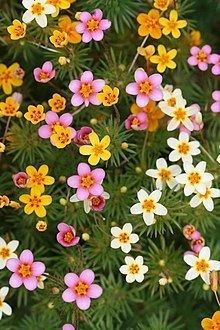Rank Species | Genus Leptosiphon Higher classification Leptosiphon | |
 | ||
Similar Leptosiphon, Polemoniaceae, Linanthus, Leptosiphon bicolor, Leptosiphon parviflorus | ||
Leptosiphon androsaceus (syn. Linanthus androsaceus) is a species of flowering plant in the phlox family known by the common name false babystars.
Contents
Distribution
The plant is endemic to California, primarily in the San Francisco Bay Area, and also in the California Coast Ranges of northern and central California, the Southern Sierra Nevada, and the Peninsular Ranges and Transverse Ranges of southern California.
It grows below 1,200 metres (3,900 ft) in chaparral, oak woodland, and grassland habitats.
Similar species are: Leptosiphon latisectus, endemic to the Outer Northern California Coast Ranges; and Leptosiphon rosaceus, endemic to Central Coast and Bay Area shorelines.
Description
Leptosiphon androsaceus is an annual herb producing a hairy stem from 5–45 centimetres (2.0–17.7 in) long, often growing erect. The oppositely arranged leaves are each divided into lobes up to 3 centimeters long and oval in shape to linear to needlelike.
The tip of the stem is occupied by an inflorescence of flowers one to three centimeters wide, usually pink or lavender with yellow or white throats. This plant is similar to its relative, true babystars (Leptosiphon bicolor).
Cultivation
The species is cultivated as an ornamental plant for its small, colorful blooms in traditional, native plant, drought tolerant, and wildlife gardens.
